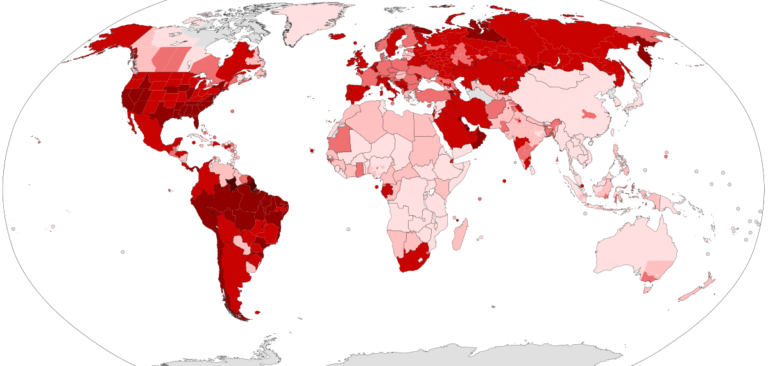The World Meteorological Organization has announced that it will be hosting a virtual global symposium from August 4 to 6 to review the relationship between weather, climate and environmental factors and the spread of Covid-19.
Environmental conditions do not appear to be principal drivers of the first wave of the pandemic. Nonetheless, the WMO notes that questions remain as to whether factors such as temperature, humidity, air quality and ultraviolet light influence the spread of the SARS-CoV-2 virus and the disease (Covid-19) that it causes.
“It is critical to understand whether meteorological, climatological and environmental factors promote the spread of the disease either outdoors or indoors. This is a pertinent scientific question that is the subject of numerous studies,” said Professor Jürg Luterbacher, WMO chief scientist and director of science and innovation.
“Covid-19 is likely to be prevalent beyond the initial pandemic phase for several years. Better understanding of whether it will be influenced by seasonal environmental and weather conditions, as is the case with many other respiratory viruses and diseases, will help inform public health policy and management of the disease in the coming months and years,” added Dr Joy Shumake-Guillemot of the WMO/World Health Organization Joint Climate and Health Office.
The disease originally manifested in the northern hemisphere in early to mid-winter, in places with temperate climates, and spread east and west in an initially quite narrow climate band. This could reflect a climate sensitivity, but could just as plausibly reflect trade and human movement patterns.
Some countries currently facing the highest Covid-19 burdens are located in the tropics and subtropics. But there are also increasing case counts in some southern hemisphere countries as they move into winter. Whether this is a meteorologically driven phenomenon is yet to be determined.
Similarly, there are concerns about a resurgence in the next northern hemisphere winter, but these speculations are based largely on experience with other respiratory diseases that peak in winter and not on firm knowledge of Covid-19 climate sensitivities.
The WMO says its e-symposium aims to create a forum to review and discuss existing studies in order to inform the state of knowledge that already exists and provide guidance for future research. More than 450 participants will consider some 100 contributions on the topic from researchers based in 20 countries. There will be several keynote presentations, as well as panels and breakout sessions on understanding dynamics, forecasts and projections, and actionable information.



